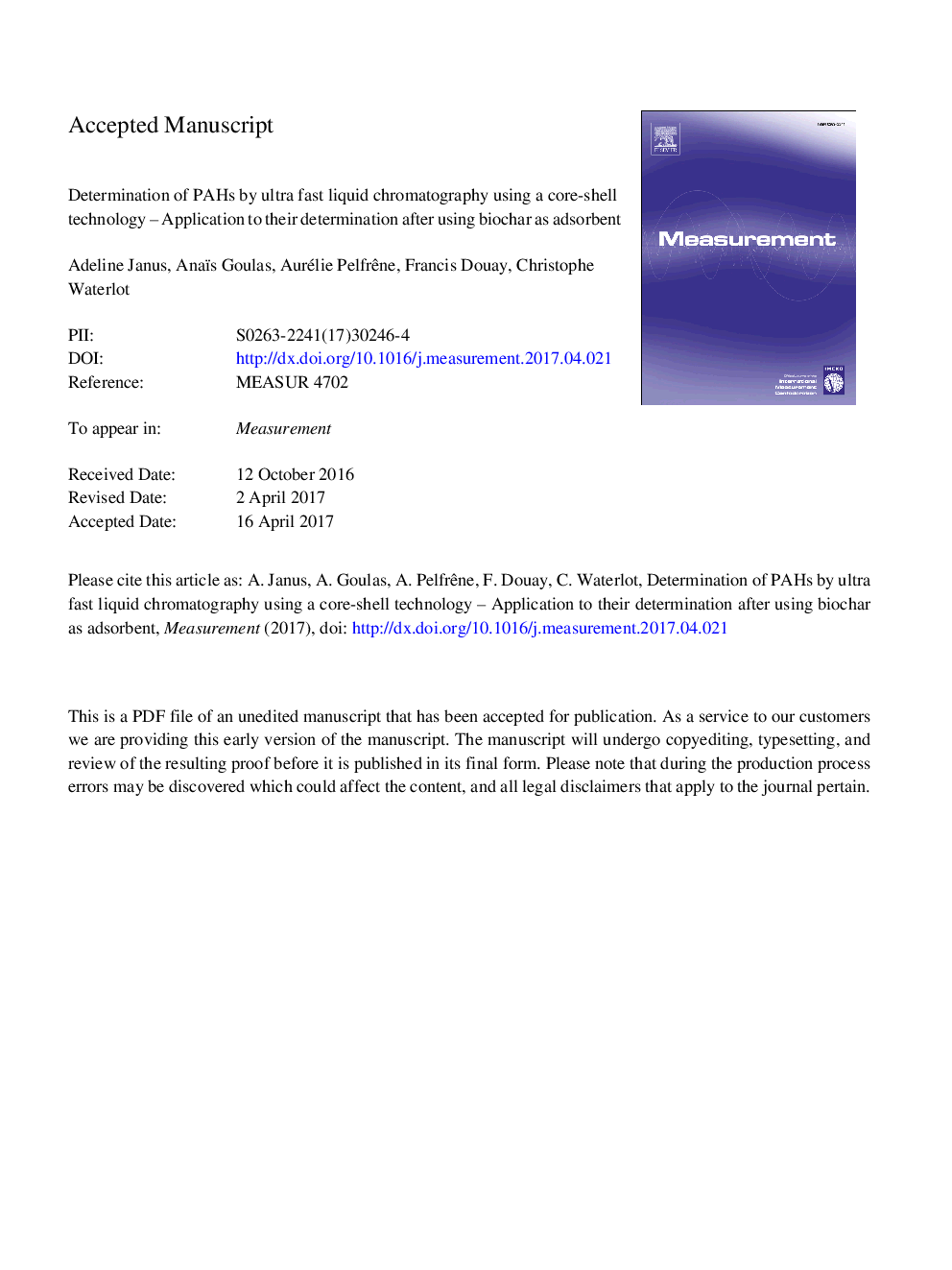| Article ID | Journal | Published Year | Pages | File Type |
|---|---|---|---|---|
| 5006603 | Measurement | 2017 | 22 Pages |
Abstract
The C18 column (250 mm Ã 4.6 mm) packed with 5 μm core-shell particles was used in an effort to optimize the separation of 8 polycyclic aromatic hydrocarbons under very low pressure values (44-52 bars), low temperature (16 °C) and in 13 min. Chromatogram and peaks of each polycyclic aromatic hydrocarbon studied, obtained using an ultra fast liquid chromatography fitted with this column and equipped with a diode array detector, were compared with those obtained using two other traditional C18 columns, packed with fully porous 5 μm particles, usually used in our laboratory and specifically designed for the separation of polycyclic aromatic hydrocarbons. Thinnest peaks, highest sensitivity and efficiency are the main results related to the core-shell technology of the recent Kinetex column compared to more common C18 columns due to the bed uniformity and packing quality of the recent core-shell column. On the other hand, reduced retention time was highlighted for each polycyclic aromatic hydrocarbon using the column packed with core-shell particles resulting from the lower surface area of these particles compared to the totally porous particles of the both other columns used. Limits of detection and quantification, linearity range and repeatability were determined for the method developed with the core-shell column. A practical application was realized by evaluating the sorption capacity of the 8 polycyclic aromatic hydrocarbons studied in mixture using a biochar made from woody plants. To this end, the biochar was mixed with aqueous solution spiked with the mixture of polycyclic aromatic hydrocarbons and a kinetic study of their sorption was conducted. Sorption percentage was higher than 89% for each polycyclic aromatic hydrocarbon studied showing that the studied biochar could be good and low cost alternative products for the sorption of this type of pollutants.
Related Topics
Physical Sciences and Engineering
Engineering
Control and Systems Engineering
Authors
Adeline Janus, Anaïs Goulas, Aurélie Pelfrêne, Francis Douay, Christophe Waterlot,
